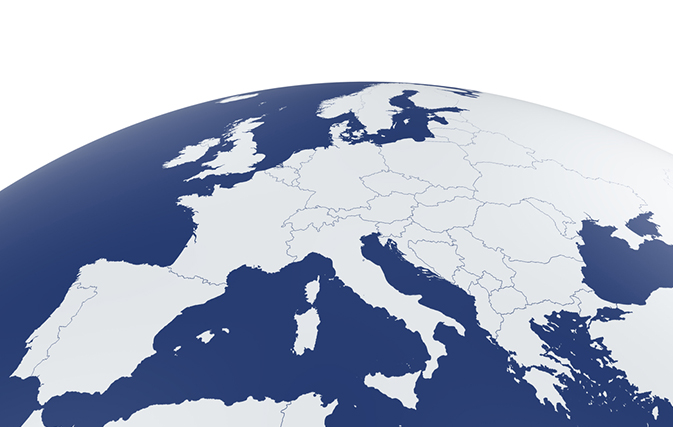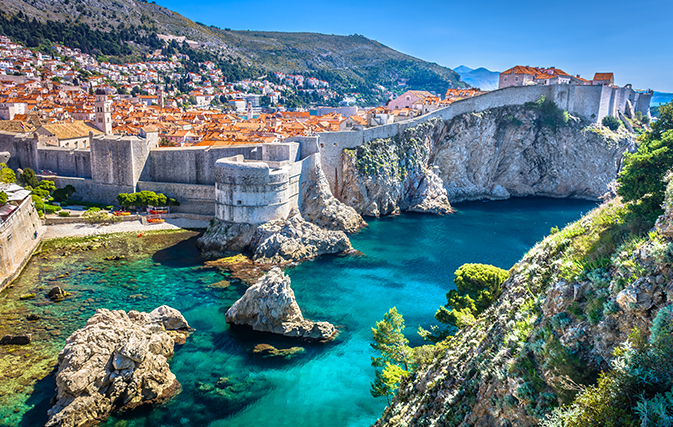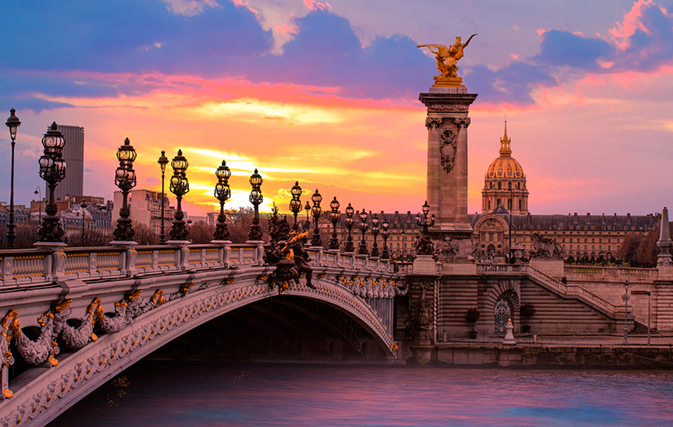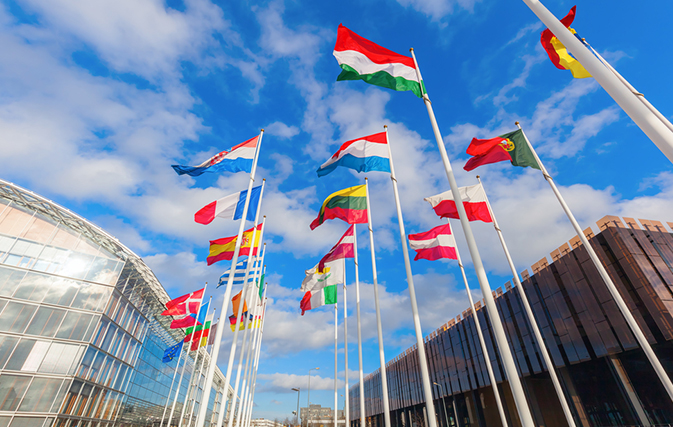TORONTO — While this is far from a typical year, Europe still beckons for many, and some clients may be wondering how to travel to Europe this fall.
UPDATED OCT. 21, 2020
In mid-September 2020 Travelweek pulled together this info list of all the European countries that had reopened to Canadian travellers, with entry requirements and in-destination updates from the Re-open EU site, plus the latest from tourism board sources.
However effective Oct. 21, 2020 the EU has reportedly taken Canada off its green-light list for inbound travel to Europe. The list of destinations below will be updated as new information becomes available. However for now it appears that Canadian travellers can no longer travel to Europe without restrictions.
For the most up to date information see the Reopen EU site here.

BULGARIA
Entry requirements: Canadians can travel to Bulgaria and currently they do not need to provide proof of a negative PCR test, and they do not need to quarantine upon arrival. A ‘Declaration for Travel at one’s own Risk’ form can be found at: https://www.tourism.
In destination: Masks or face coverings must be worn on public transportation. Hotels, restaurants and bars are open with health and safety protocols in place. Museums and other attractions are also open.
Helpful resources: https://bulgariatravel.org/en/
CROATIA
Entry requirements: Non-EU citizens who wish to enter Croatia for tourism must present a confirmation of paid accommodation. These visitors are not subject to a 14-day quarantine if they present a negative PCR result for SARS-Cov-2 upon arrival, taken within 48 hours. If visitors have a test older than 48 hours when entering Croatia, they will be allowed entry, however they must self-isolate and re-test themselves in Croatia at their own expense. Visitors who do not present a negative PCR result are subject to a mandatory 14-day quarantine. All travellers are advised to fill out the form on the EnterCroatia web page.
In destination: Hotels, restaurants, beaches, tourist areas, museums and heritage sites are all open. Visitors are asked to maintain physical distancing of at least 1.5 metres, personal hygiene and disinfection. Masks are strongly recommended in all public places.

Helpful resources: www.koronavirus.hr
CYPRUS
Entry requirements: Cyprus has divided countries into three categories – A, B and C – based on epidemiological criteria and data. As part of Category A, passengers from Canada are only asked to provide some specific information and a declaration to enter Cyprus. Those in categories B and C must undergo a COVID-19 test within 72 hours prior to departure, show a negative test result as well as provide specific information and a declaration. All passengers, regardless of category, must submit all information and documents required to obtain the CyprusFlightPass within 24 hours before starting their journey, from their country of origin, either via direct flight or with intermediate stops.
In destination: Hotels, restaurants, bars, beaches and attractions are open. On beaches, it is required to maintain a distance of four metres between umbrellas, and two metres between sun beds occupied by different groups. Though face masks are mandatory inside museums and at heritage sites, they are not mandatory elsewhere in public, but recommended in closed places.
Helpful resources: https://www.pio.gov.cy/
CZECHIA / CZECH REPUBLIC
Entry requirements: Canada is on Czechia’s list of countries considered to be low-risk for COVID-19, meaning Canadians can enter without any major restrictions.
In destination: The Ministry of Health has updated the map of Czechia’s alert levels for public health protection. The orange districts, meaning those with incipient community transmission, now include Beroun, Kladno, Kolín, Prague-East and Uherské Hradiště. Prague also remains orange. A mandatory mask rule for all indoor premises of all buildings went into effect Sept. 10.
Helpful resources: https://koronavirus.mzcr.cz/en/
DENMARK
Entry requirements: Denmark’s borders are currently open for Canada and a small handful of other countries, no matter the purpose. Foreigners showing clear symptoms such as dry cough and fever will not be permitted to enter. No mandatory quarantine is in place.
In destination: Hotel accommodations are currently open, as are museums and heritage sites. Restaurants, bars and cafes are open although groups of 10 or more are not allowed. All establishments selling food and drinks must close at midnight, at the latest. Masks are recommended at large gatherings and are mandatory on public transport. At least one-metre distance in general is required. A temporary ban on events and activities is in place where more than 50 people are gathered.
Helpful resources: https://www.visitdenmark.com/
ESTONIA
Entry requirements: Residents of Canada and nine other countries are currently permitted to enter Estonia, providing they show no symptoms. All visitors must provide information about their travel itinerary, travel companions, and possible contact with a person showing COVID-19 symptoms and their current health situation.
In destination: Tourist accommodations are open to visitors, as are restaurants, nightclubs, beaches and attractions. A reasonable distance must be observed in public places and hygiene measures must be followed. Saunas, swimming pools and casinos are allowed to reopen with a maximum 50% capacity, and no more than 50 visitors are allowed to stay simultaneously on the premises. It is not mandatory to wear face masks but it is recommended if it is not possible to maintain a reasonable physical distance.
Helpful resources: https://www.kriis.ee/en/
FRANCE
Entry requirements: There are no restrictions for travel to Metropolitan France for visitors from Canada, or from the EU/EEA or from about a dozen other countries.
In destination: Many of the country’s top attractions, including the Eiffel Tower and the Louvre, have reopened. Masks are compulsory for enclosed public spaces, for everyone over the age of 11, across France. Masks must also be worn outdoors at crowded locations in Paris.
Flights from Canada: Air Canada, Transat, Air France

Helpful resources: https://www.diplomatie.gouv.
GERMANY
Entry requirements: Travellers from Canada are allowed to enter Germany without restrictions.
In destination: Public life in Germany’s cities has returned, but everyone is asked to keep a minimum distance of 1.5 metres between themselves and others. As well, many federal states require masks in certain public areas, such as public transport and shopping. In hotels and restaurants, all service staff have to wear face coverings at all times. Almost all public transport services in Germany have returned to normal schedules. Passengers must wear a face covering on buses and trains as well as inside the stations.
Flights from Canada: Air Canada, Lufthansa
Helpful resources: https://www.
GREECE
Entry requirements: Travellers from Canada and 11 other countries are allowed to enter Greece without restrictions. Before entering the country, all travellers must complete a Passenger Locator Form. All visitors from air, land or sea will be subject to random tests upon arrival. In the event of a positive result, they will be contacted and placed on 14-day quarantine, with expenses covered by the Greek state.
In destination: Tourism accommodations are available under specific hygiene protocols, as are restaurants, bars, cafes, beaches, museums and attractions. Masks are mandatory in all closed spaces and on public transportation. Social distancing rules are in place in a wide range of places, including malls, restaurants, markets, shops and public transportation vehicles.
Helpful resources: https://greecehealthfirst.gr/ and http://www.visitgreece.gr/en/
ICELAND
Entry requirements: Canadians are permitted to travel to Iceland, however non-essential travel remains largely prohibited and is allowed only for essential reasons or for those with a permanent residency in Iceland or within the EU/Schengen Area, according to the Reopen EU site. As well, since Aug. 19, 2020 anyone entering Iceland must either quarantine for 14 days, or undergo a double-testing process for COVID-19 along with a 4 – 5 day quarantine. As well, all arriving passengers must pre-register before arrival.
In destination: Iceland’s tourism board says all travellers are strongly encouraged to follow precautionary guidelines, such as frequent hand-washing and social distancing, and to respect regulations in place, including the 2-meter social distancing rule and the ban on social gatherings of more than 100 people.
Flights from Canada: Icelandair

Helpful resources: https://visit.covid.is/ and https://visiticeland.com/
IRELAND
Entry requirements: Canadians are able to enter Ireland but must first restrict their movements for 14 days upon entry. Restricting one’s movements means staying indoors in one location and avoiding contact with other people and social situations as much as possible. All visitors arriving from overseas must complete a Public Health Passenger Locator Form, which includes their address while in destination as well as a contact number.
In destination: Hotels have reopened with limited occupancy and social distancing measures. Restaurants have reopened with social distancing and strict cleaning protocols, and have been advised to close by 11:30 p.m. Customers are required to wear face coverings until seated and on departure, while tables are limited to a maximum of six people from no more than three households. Beaches are open and subject to social distancing; tourist travel to offshore islands is currently permitted. It is mandatory to wear a face covering on public transport and in public places like shops and shopping centre.
Fights from Canada: Air Canada, Aer Lingus (resuming Sept. 21)
Helpful resources: https://www.gov.ie/en/
ITALY
Entry requirements: Canadian travellers entering Italy are subject to a 14-day quarantine and self-certification of the reasons of absolute urgency, work or health for which they must enter Italy, according to the Reopen EU site. A self-declaration form can be accessed here.
In destination: It is now possible to move freely within the entire country. Shops, hotels, restaurants, bars, cafes, beaches and major attractions have been allowed to reopen, providing they enforce interpersonal distance of at least one metre. It is mandatory to wear masks in closed spaces, including public transport and in any situation where it’s not possible to guarantee a safe distance; children under six years old are exempt. Museums, archaeological areas and parks are allowed to reopen with reduced capacity, while cinemas, theatres and concert halls can do so with a maximum number of spectators and pre-assigned spaced seats. Masks and temperature checks are required at entrances.
Flights from Canada: Air Canada
Helpful resources: http://www.italia.it/en/
LATVIA
Entry requirements: Travel by Canadians to Latvia is permitted. Currently Canadians are not required to quarantine for 14 days upon arrival in Latvia. Latvia’s latest list of approved countries can be found at https://www.spkc.gov.lv/sites/
In destination: Masks and face coverings are recommended (though not obligatory) for anyone using public transport in Latvia, including international flights and trains. Restaurants, bars and night clubs are open, though some may have restricted hours of operation.
Helpful resources: https://www.spkc.gov.lv/sites/
LITHUANIA
Entry requirements: Canadians can travel to Lithuania. Lithuania has a list of countries with high rates of COVID-19 infection and depending on the rate of infection, passengers from impacted countries may need to self-quarantine upon arrival in Lithuania, and/or present a negative PCR test upon arrival. Currently Canada is not on that list (found here: http://koronastop.lrv.lt/en/
Helpful resources: http://koronastop.lrv.lt/en/
LUXEMBOURG
Entry requirements: Luxembourg’s entry ban for third-country nationals has been extended until Sept. 15, 2020, though residents from Canada and 10 other countries are exempt and permitted to enter. These travellers will need official documents proving their residence. There is no mandatory quarantine.
In destination: Hotels, restaurants, bars, beaches and attractions are open. No more than four people may sit at the same table in restaurants, and a distance of 1.5 metres between tables in restaurants, bars and cafes is mandatory. Face masks are mandatory in public when a social distance of two metres cannot be observed, including public transport.
Helpful resources: https://guichet.public.lu and https://coronavirus.
MALTA
Entry requirements: Malta’s travel ban has been lifted for more than half a dozen countries, including Canada. Every country on the list is part of Malta’s Public Health Corridor (PHC). There are no pre-arrival PCR swab test or quarantine restrictions for PHC countries including Canada. Arriving passengers must complete a Public Health Declaration Form and a Passenger Locator Form, which can be downloaded here: https://www.maltairport.
Helpful resources: https://deputyprimeminister.
THE NETHERLANDS
Entry requirements: Residents of Canada are currently allowed to enter the Netherlands. Passengers are required to carry a health declaration with them when they fly, which can be downloaded here. Those returning from a high-risk area (a country or region with an orange or red travel advisory) may be requested to test for coronavirus, which can be down at Schiphol airport.
In destination: Face masks are mandatory in public transport for all passengers aged 13 and over, as well as in aircraft and at Dutch airports. In select areas of Amsterdam and Rotterdam such as on the street and in shops, people aged 13 and over are also asked to wear face masks. Physical distancing of 1.5 metre is required for anyone over the age of 18. Tourist accommodations are open with hygiene rules and physical distancing measures. At restaurants and bars, reservations are often required and capacity has been reduced, plus visitors are asked to register voluntarily for contact tracing purposes. At museums and monuments, the maximum number of visitors depends on the size of the building.
Flights from Canada: KLM
Helpful resources: https://www.rivm.nl/en
POLAND
Entry requirements: Canadians are lawfully permitted to enter Poland without quarantining. No forms are needed.
In destination: Face coverings are required in public spaces where keeping a 1.5 m (5 ft.) distance is not possible. Most tourist attractions are open with some limitations. Stores, malls, hotels, and restaurants are open. Indoor dining is possible as well as religious services.
Flights from Canada: LOT Polish Airlines operates nonstop, Dreamliner service from Toronto to Warsaw four times per week
Helpful resources: https://www.gov.pl/web/coronavirus/temporary-limitations and https://www.gov.pl/web/coronavirus/travel
PORTUGAL
Entry requirements: Canadians are allowed to travel to Portugal.
Flights from Canada: TAP
Helpful resources: https://www.visitportugal.com/
ROMANIA
Entry requirements: Canada is on the list of approved countries for entry into Romania. Passengers may still be subject to a mandatory 14-day quarantine upon arrival, depending on their own country’s COVID-19 caseload. According to the Reopen EU site, as long as a country is on Romania’s ‘green’ list, the 14-day quarantine, while still recommended, will not apply. Romania’s latest updates of ‘green’ list and ‘yellow’ list countries can be found at http://www.cnscbt.ro/index.
In destination: Romania’s hotels, museums, cultural sites and tourist attractions are open, as well as its grocery stores, pharmacies, shops and more. Currently restaurants are offering take-out food as well as open-air table service (terraces, patios, etc.). Masks are required in all indoor public spaces as well as when in crowded outdoor spaces.
Helpful resources: http://romaniatourism.com/
http://www.cnscbt.ro/index.
SLOVAKIA
Entry requirements: Canadians can enter Slovakia without restrictions. All persons who arrive to Slovakia by air must fill in the registration form: Public Health Passenger Locator Form and obey all epidemiological measures as ordered by the Public Health Authority of the Slovak Republic.
Helpful resources: https://www.mzv.sk/web/en/covid-19 and https://korona.gov.sk/en/
SPAIN
Entry requirements: Canadians are allowed to travel to Spain. Visitors must complete a health control (FCS) form and sign it electronically before travelling to Spain. The FCS form can be found at the Spain Travel Health website (spth.gob.es/). After the form is signed visitors will receive a QR code which they must present upon arrival in Spain. The QR code is valid in both digital and printed formats. A separate FCS form must be filled out for each person and each trip. As well, all travellers arriving in Spain by air or sea will go through a health check (i.e. temperature taken, documents checked, and a visual examination of the passenger’s state of health). Anyone departing Spain by plane must get their boarding pass online before going to the airport, because they will have to present it to be allowed in to the airport.
In destination: With the exception of the Canary Islands, every destination in Spain requires masks for everyone age six and older. Social distancing is observed. Hotels and restaurants may be operating at reduced capacity for safety.
Helpful resources: https://www.spain.info/en/
SWEDEN
Entry requirements: The Swedish government has suspended non-essential travel to Sweden from countries outside the EU, except Canada and nine other countries. There is no quarantine requirement for travellers to Sweden.
In destination: Tourist accommodations are open, as are restaurants, beaches, tourist areas, museums and heritage sites, although many facilities may have limited opening hours. People are advised to keep distance from one another, both indoors and outdoors, in places where people gather. There is no general requirement to wear a face mask in public places or public transport.
Helpful resources: https://visitsweden.com/about-
SWITZERLAND
Entry requirements: There are no restrictions for travel to Switzerland for Canadians. Visitors who re-enter Switzerland after spending time in a state or area defined as a Covid risk area within the previous 14 days must immediately go to their suitable accommodation where they must stay of 10 days from the day of their arrival. They must also report their arrival to the responsible cantonal authority within two days. For a list of high-risk areas go to www.bag.admin.ch.
In destination: All tourism-related businesses and attractions are currently open. Face masks are strongly recommended in places where physical distancing of 1.5 metres cannot be observed. Passengers over the age of 12 must wear masks on Swiss public transport.
Flights from Canada: SWISS, Air Canada
Helpful resources: https://www.bag.admin.ch/bag/
UNITED KINGDOM
Entry requirements: Currently Canadians must self-isolate for 14 days upon arrival in the UK. The UK updates its list of approved countries every two weeks or so. The list can be found here: https://www.gov.uk/guidance/
In destination: VisitBritain has an excellent ‘Know Before You Go’ resource at its website, with the latest information about mandatory face coverings, pre-booking time slots at popular attractions, banking tips for cashless transactions and more. The ‘Know Before You Go’ page can be found at https://www.visitbritain.com/
Flights from Canada: Air Canada, Transat and British Airways
Helpful resources:
https://www.visitbritain.com/
https://visas-immigration.
https://visas-immigration.
Effective Oct. 21, 2020 the EU has reportedly taken Canada off its green-light list for inbound travel to Europe. The list of destinations above will be updated as new information becomes available. However for now it appears that Canadian travellers can no longer travel to Europe without restrictions. Information about travelling during the COVID-19 pandemic is constantly changing. We have taken every care to ensure these listings are accurate, however Travelweek cannot be held responsible for the information in this list. Helpful resources with constantly updated details about entry requirements, quarantine and more include the Re-open EU site and IATA’s COVID-19 Travel Regulations Map.
